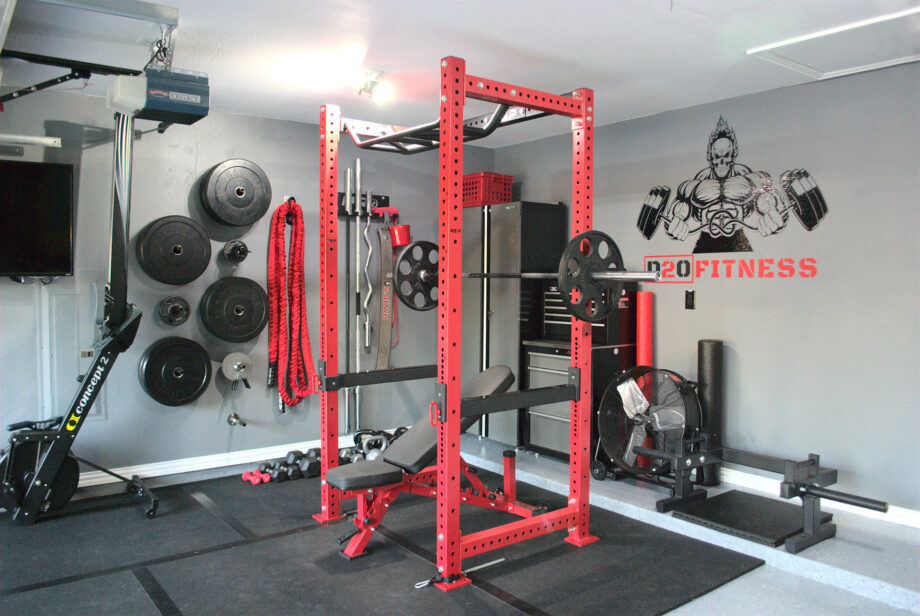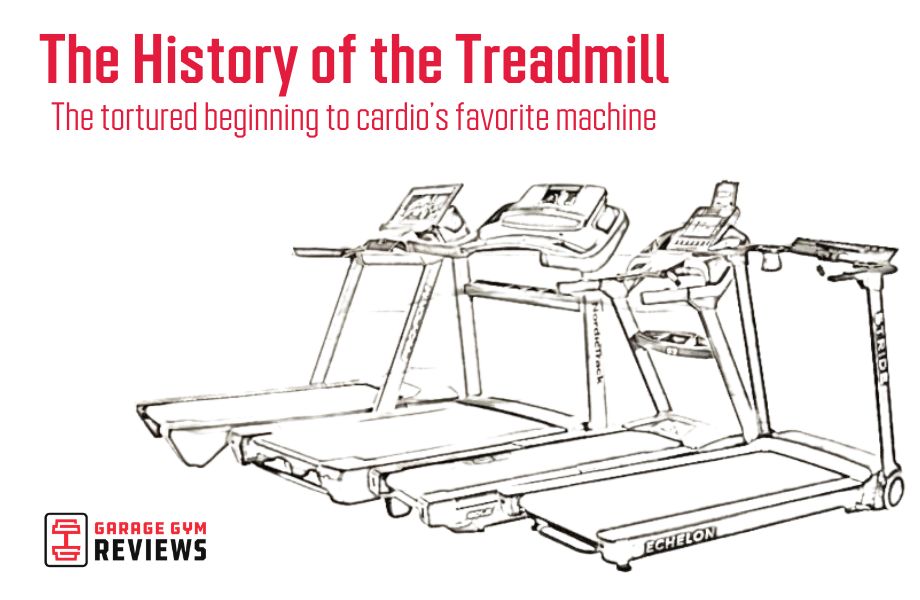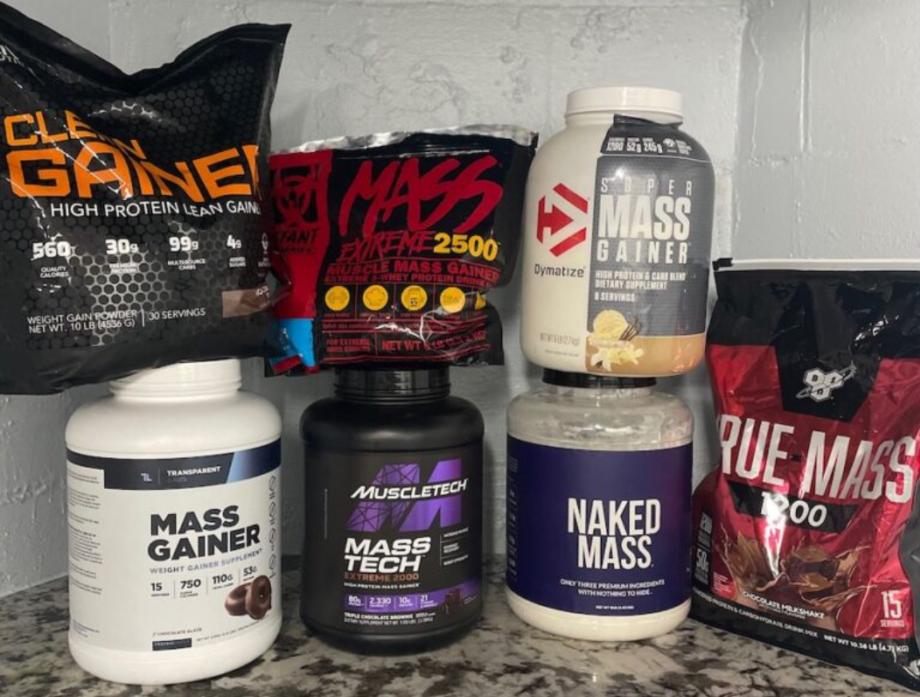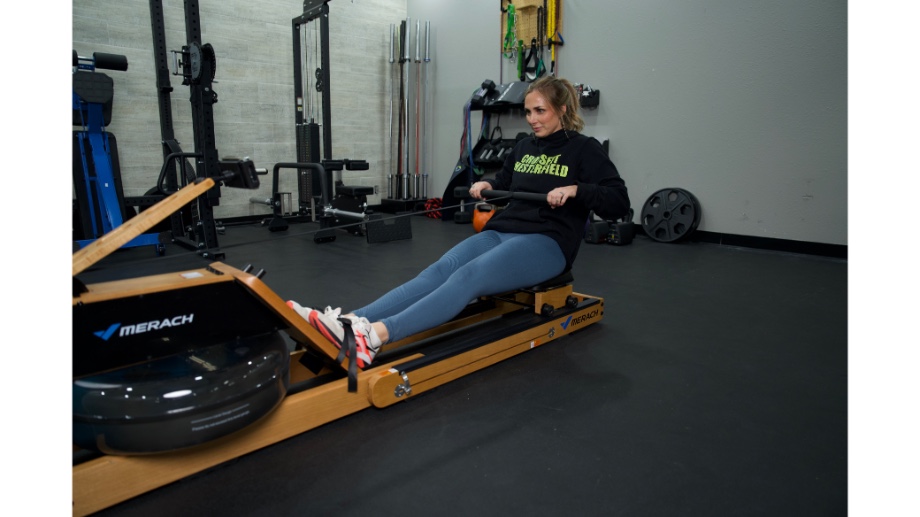The Pros and Cons of the Two Most Common Types of Racks for a Garage Gym
Sticking with a membership at a commercial gym is tempting because it’s convenient. They’re often outfitted with the biggest, baddest, most functional fitness equipment on the market, which makes it hard for our home workouts to measure up.
With a comprehensive garage gym setup, however, you can get the same results, if not better since you’re playing on your home turf. You just need to prioritize purchasing the pieces of equipment that will provide the most impact upfront.
That’s why one of your first orders of business should be to settle the age-old debate—squat stand vs power rack. Which is best for you and your home gym? What gives you the most bang for your buck? What things should you keep in mind when making your purchase?
We dive into all this and more. Let’s get started, fitness fam!
What is a Squat Stand?
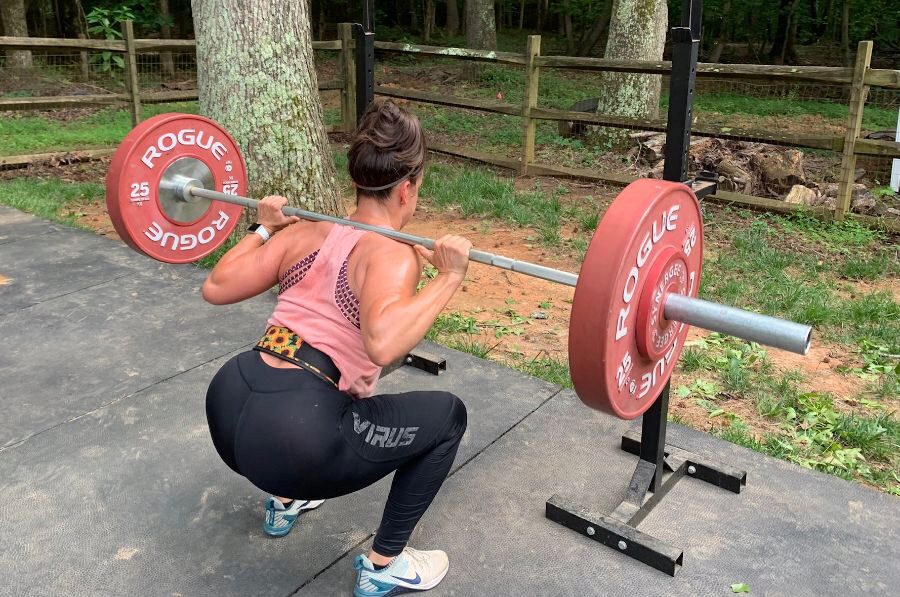
First things first: Let’s broadly define each item.
A squat stand, sometimes referred to as a squat rack, is a basic piece of equipment used to support your barbell in between sets of squats. Squat stands consist of two steel uprights, each including a J-hook that holds the barbell while you are not working. These uprights are often welded to the same base for increased stability, but they may be freestanding as well.
The two uprights of the squat stand often are adjustable so you may set it to the correct height, roughly at your collarbone, for your starting position. Since the uprights adjust, you are also able to bring them down lower and place a bench beneath them to perform a bench press.
What is a Power Rack?
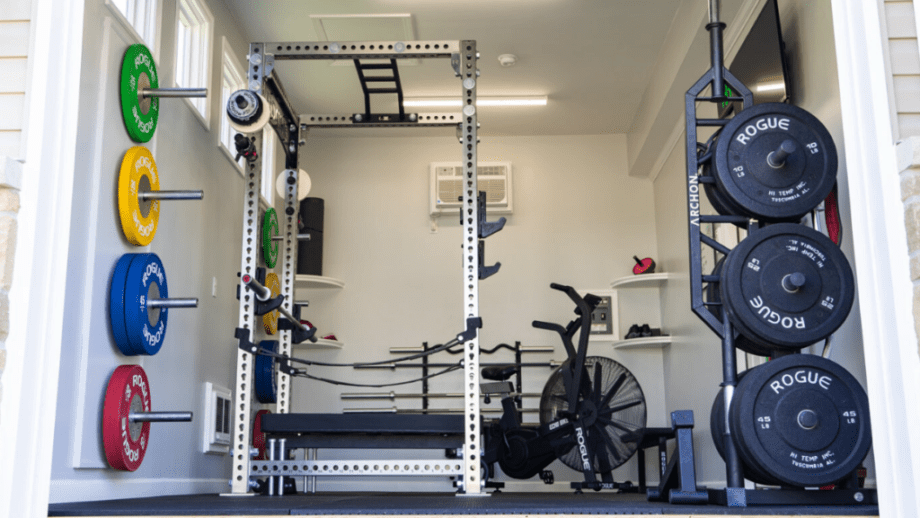
A power rack, sometimes referred to as a power cage, is another piece of fitness equipment used to support your barbell in between sets of squats, but it is much more versatile than your standard squat stand.
Power racks have four uprights, which provide an enclosure for the lifter to perform their strength training from within. The four uprights are connected by horizontal framing, which will catch a barbell in the event of a bailed lift thus eliminating the need for a spotter.
That’s not all. The uprights generally contain holes at various heights, so you can affix numerous accessories or attachments and get even more functionality from this one important rack. Pull-up bars, dip bars, safety spotter arms for the outside of the cage, and more are all possibilities.
Related: The Best Squat Racks For 2023
Squat Stands: Pros and Cons

Here’s a look at the benefits and drawbacks of the humble squat stand.
Squat Stand Pros:
- More flexibility
- Low profile
- Less expensive
More Flexibility
Sure, you’re super safe from squat mishaps within the great cage of the power rack, but what does this mean when you want to transition from your squats to Olympic lifts (or anything else that doesn’t quite work within the confines of four steel posts)?
For a power rack, you’ll have to unload the barbell, remove it from within the cage, set it on the J-cups outside, reload it, and then get your set in at long last.
Squat stands don’t contain you at any point because they only have two uprights. You can seamlessly transition from squat sets to snatches to virtually anything else with little to no downtime. Squat stands are also your better bet for overhead presses, as the top of the rack tends to get clipped by taller athletes if they choose to press from inside the cage.
Simple squat stands are also excellent for CrossFit WODs that require you to perform a lift and get going right after for push-ups, burpees, or cardio immediately after each set.
Low Profile
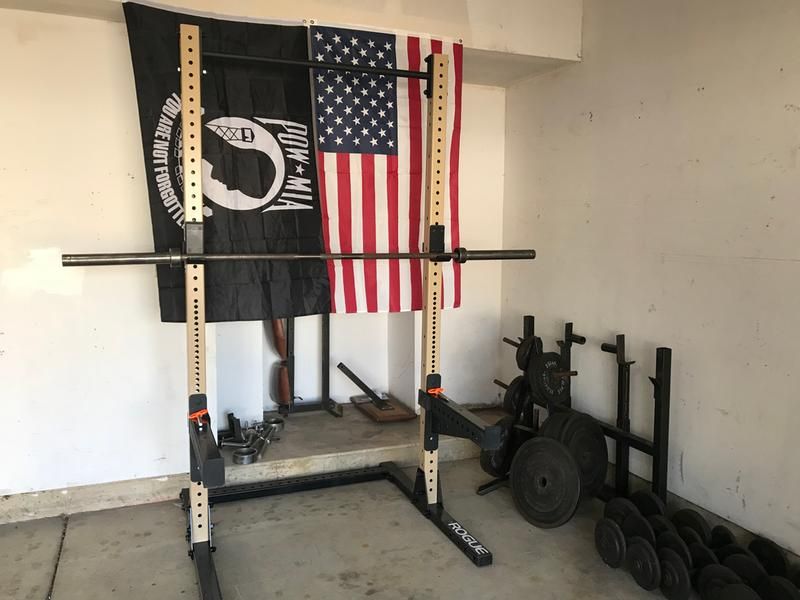
A power rack is a big bad piece of gym equipment, and it sure eats up a lot of floor space. That’s not all. Power racks often stretch up over 80 or 90 inches in height, making them hard to cram into spaces with short ceilings.
You won’t have that problem with a squat stand. With only two uprights, they’re lighter, easier to move around the space, easier to stow, and eat up less footprint while they’re out.
If you have limited space, the squat stand is the clear winner.
Less Expensive
A squat stand is considered a half rack, whereas the power cage is very much a full rack. For this reason, you’re going to wind up paying for a heck of a lot more for a power rack versus the squat stand.
Not only do they retail for higher prices, but shipping costs will likely be higher as well, seeing as they weigh more and require more packaging. You won’t encounter this issue when purchasing a high-quality squat stand.
Squat Stand Cons:
- Less versatility
- Less customization
- Fewer safety features
Less Versatility
Most squat stands come with just the two uprights components and a pair of J-cups, and that’s about it. You may find some with a pull-up bar included as well, but often it will feel less sturdy than a pull-up bar offered by a power rack.
As far as the squat stand goes, you get squat variations, overhead lifts like the shoulder press, and the bench press. That’s about it.
Less Customization
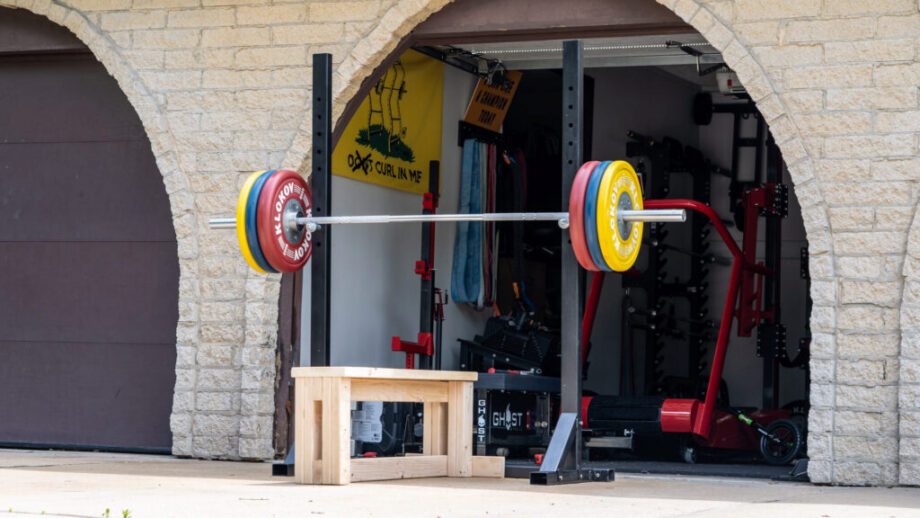
A power rack with four sturdy uprights is capable of incredible customization. Add-ons for the most comprehensive options include pull-up or chin-up bars, dip bars, weight storage, bands, chains, landmine, wall ball targets, and much, much more.
Power racks, while they cost more, tend to be a lot more bang for your buck when compared to a standard squat stand (unless you’re opting for an ultra-budget version).
Fewer Safety Features
Squat stands are not inherently dangerous, but they will feel flimsier than the power rack when you place a heavy loaded barbell back on them.
This isn’t ideal when you’re exhausted after the set and you need to just dump the bar back on the rack and rest, as the stand could tip if you’re not careful with placing back heavy weights. (This is why we recommend bolting stands and racks regardless of how you use them.)
In addition, squat stands typically have no safety arms or any way to catch a bailed lift. If you aren’t able to get up from the bottom of your back squat, you have no choice but to bail it to the floor—and that can be extremely dangerous if you don’t’ know how to do it.
We recommend using bumper plates with squat stands, as the floor of your garage gym will start to show some signs of serious wear and tear otherwise.
Power Racks: Pros and Cons
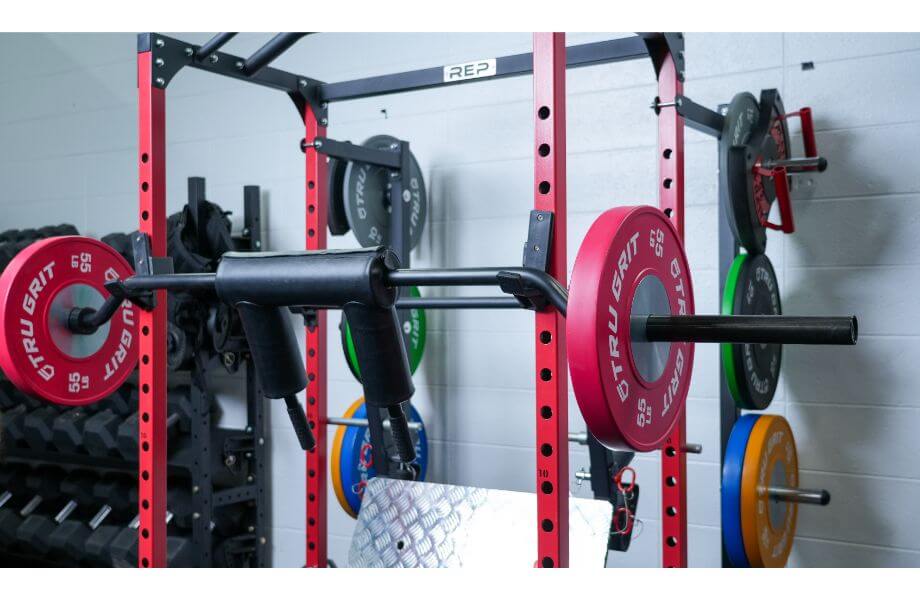
Next, let’s examine the advantages and disadvantages of the bigger, sturdier option: the power cage.
Pros:
- More versatility
- More customization
- More safety features
More Versatility
A power rack has its limits, but you have access to a much greater array of exercises by using a full rack. Front squats, back squats, pull-ups, chin-ups, rows, landmine exercises, dips, and more are all possible with this one heavy-duty piece of equipment (depending on your accessories of course).
Power racks also give you a place to improve your deadlifts by performing rack pulls from within the cage. No squat stand gives you this same ability.
Related: 10 Strength-Building Squat Rack Exercises
More Customization
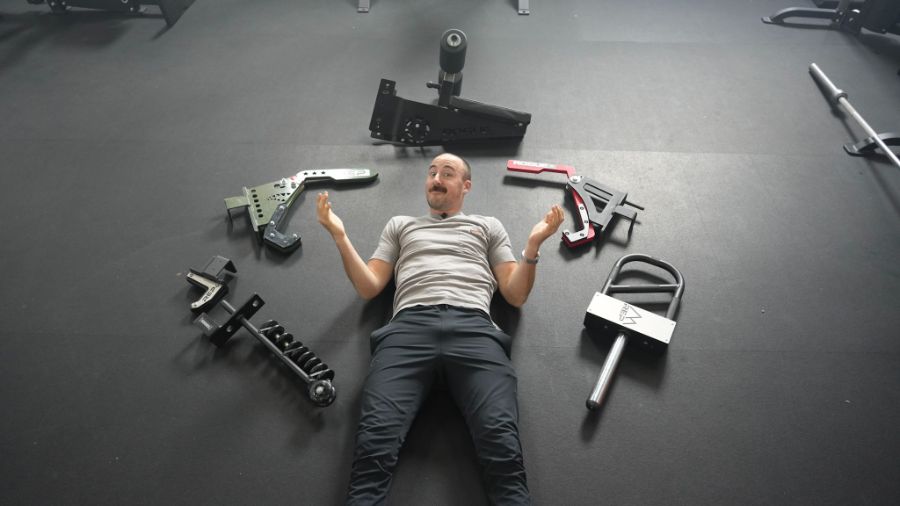
A high-quality power rack gives you ample opportunity to add on extras like pulley systems, pull-up bars, storage racks, bands, wall ball targets, landmine, and more.
Adding in loads of extras to your power rack makes your home gym as effective as any commercial gym. It also makes it very possible to complete a multitude of CrossFit WODs without having to run back and forth to different stations.
More Safety Features
There are loads of safety features incorporated in the construction of a power rack. From within the cage, you could fall forward or backward and still have the rack catch the barbell. On the outside, there are attachable safety bars to catch a falling barbell from a failed back squat or other unsuccessful lifts.
Plus, power racks are built super sturdy, so there’s no risk of them wobbling or tipping over like a squat stand might if not anchored. The best power racks are very heavy, allowing you to use them for powerlifting and heavy weightlifting without fear that the stand will tip or topple. (We still highly recommend bolting them to the floor, though.)
That confidence translates into your lifts too, meaning you’ll have a better chance of completing heavy lifts successfully. It’s a win-win!
Related: The Most Comprehensive Guide To Squat Rack Safety Ever
Cons:
- They’re big and heavy
- They’re costly
- They could be overkill
They’re Big and Heavy
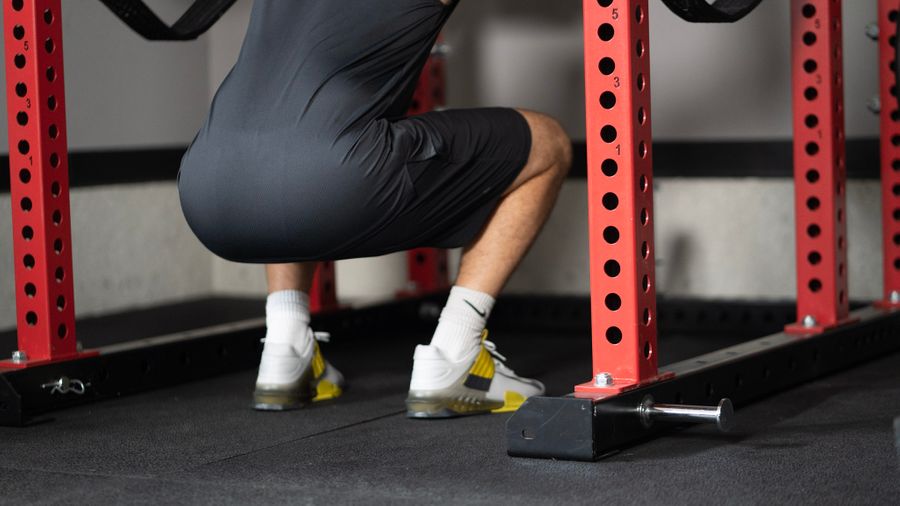
Whereas a squat stand only requires a relatively small space to set up, a power rack requires a good deal of real estate in your garage gym. Not only are they big, but they also require clearance around them to add on extras or maneuver a barbell while lifting.
They also weigh a lot, so it’s safe to assume that, once your power rack is delivered and assembled, it’s not moving from that spot ever.
They’re Costly
You could grab yourself a great squat stand for a few hundred dollars, but a high-quality power rack will cost considerably more. Even if you find a budget-friendly power rack like the Titan T-2, shipping costs will be higher since a power rack is heavier and includes more parts in the box.
There are some products, like the SML-3 Rogue 108” Monster Lite Squat Stand, that will challenge the rule, but you should generally expect to pay more for a power rack than a squat stand.
Related: Titan Squat Rack Reviews (2024): Which One’s The Best?
They Could Be Overkill
What works best for your purposes depends on what kinds of workouts you’re performing regularly.
For heavy weightlifting, powerlifting, and timed CrossFit WODs that require a lot of different stations, power racks are generally superior.
On the other hand, if you just need a place to put down a barbell in between sets of squats, overhead presses, or a basic bench press, the squat stand will get the job done more than adequately.
Squat Stand vs Power Rack: Key Differences and Similarities
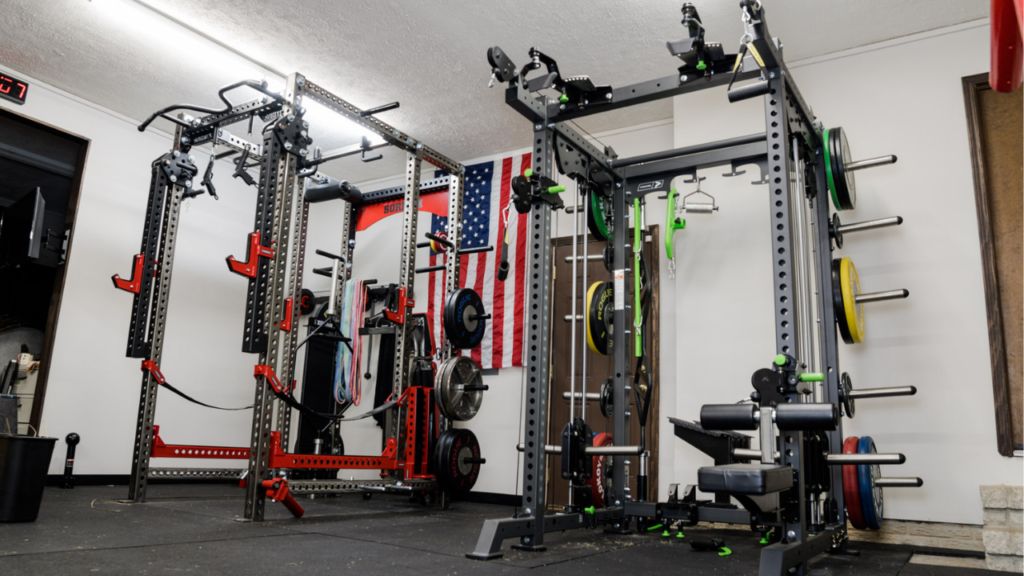
Now that you understand the pros and cons of each type of equipment, we’ll cover important differences between the two and similarities among them.
Space Requirements
Squat stands take up less space than power racks.
A squat stand will usually adjust from around 40 inches in height to sometimes as high as 70 inches. The depth is as deep as the stand’s “feet,” which are the beams that rest on the floor and support the uprights. Depth varies but generally is around 24 to 36 inches. Width is irrelevant since your barbell is going to be approximately 84 inches no matter how you slice things.
Power racks vary in size, but they will on average require 90 inches in height, 40 to 50 inches in width, and 24 to 50 inches in depth. Again, the width is not entirely relevant since your standard barbell stretches out well beyond the uprights, but garage gym owners should remember that you need space around a power rack to account for add-ons and maneuvering during and after a lift.
Weight Plate Storage
A power rack often includes a method of mounting weight plate storage to the frame, whereas squat stands generally do not.
You likely will need a separate storage method to accompany your squat stand if you choose it over a full rack.
Available Accessories
Squat stands are simple and functional pieces of fitness equipment. As such, there are few available accessories.
The power rack, on the other hand, has a near-endless selection of add-ons, attachments, and other extras including pull-up bars, pulley systems for lat pulldowns, dip bars, and much, much more.
Related: The Ultimate Guide To Power Rack Attachments (2024)
Safety Mechanisms
The only safety measure squat stands might employ are safety pins that prevent the adjustable uprights from slipping while you’re re-racking heavy weights. Some squat racks are compatible with spotter arms, although you should be aware that adding spotter arms will alter the stability of your squat stand and may be best to leave them off.
Power racks also use safety pins to keep the J-hooks in place, but they also include safety bars inside the rack and safety arms that are attachable outside as well. Lifting using a power rack eliminates the need for a spotter, as you could fall forward or backward inside the cage and the rack will still catch the barbell.
Squat Stand vs Power Rack: Final Thoughts
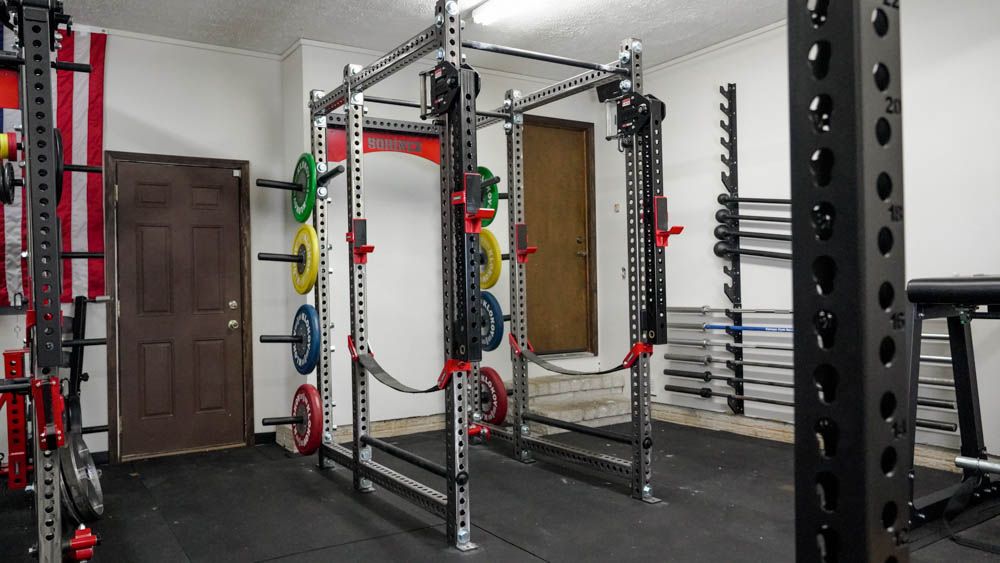
So, considering everything covered in the information above, which one reigns supreme? Is it the straightforward, no-nonsense, no bells and whistles squat stand, or is it the bodybuilding and powerlifting behemoth that is the power rack?
As with most things in fitness, the answer isn’t clear cut.
We recommend a squat stand if:
- You have limited space in your home gym
- You have a limited budget
- You only need something simple for squats and a few other lifts
Likewise, we recommend a power rack if:
- You want a piece of equipment with more versatility
- You want a centerpiece for your home gym
- You will need to lift very heavy weights
- You will be lifting regularly without a spotter
- You have the space to accommodate it
We’d never disparage a perfectly good squat stand, but we find much greater value in a high-quality power rack if you could accommodate one. However, what works best for you will depend on a variety of factors as outlined above, so you’ll need to do some research to find the best fit for your purposes.
Happy shopping, fitness fam!
FAQs: Squat Stand vs Power Rack
Where can I purchase a squat stand or power rack?
Many retailers offer squat stands and power racks, including big box stores like Walmart and Dick’s Sporting Goods. Local, independent specialty shops tend to have good inventory too, but you’ll be more limited in selection by what these brick-and-mortar locations offer.
As with most things in our modern day, online is often the best place to purchase your squat stand or power rack. Amazon offers some selection, but you can go directly to the manufacturer’s website to find exactly what you’re looking for directly from the manufacturers themselves.
Are squat stands dangerous?
Inherently, they are not, but there are things to keep in mind to operate them responsibly. For example, squat stands are typically freestanding, unless you anchor them to the floor, and they can and will tip if you load heavy weights and try to re-rack the barbell too hastily.
If you are lifting close to your one-rep max and you feel you won’t be able to easily rack the weight to the stand, it’s better to bail it off your back and unload it off the floor than to excruciatingly try to get it back onto the freestanding apparatus that is a squat stand.
Likewise, power racks are sturdy, so you can more easily dump the barbell right back onto the J-hooks with no issue.
Do they make squat stands with safety arms?
Yes, but they are considerably heavier than other squat stands on the market. The reason for this is because it would tip from the barbell’s weight if the rack itself was light.
It’s generally safer to use bumper plates and bail the weight off your back in the event that you are unable to complete the lift. Consult a personal trainer or coach for the proper form if you have never bailed a heavy weight before, as you should practice it before the moment you need to use it.
Using a spotter is recommended as well.


